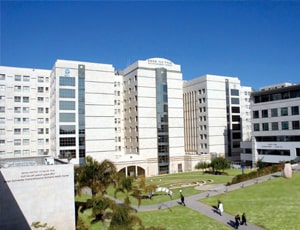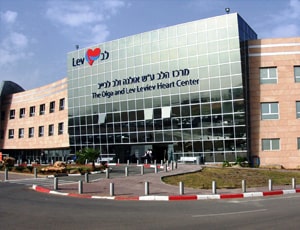The average cost of Stroke Treatment in Petah Tikva approximately starts from USD 3829
Treatment cost

Rabin Medical Center located in Petah Tikva, Israel is accredited by JCI. Also listed below are some of the most prominent infrastructural details:


Sheba Medical Center located in Tel-Hashomer, Israel is accredited by JCI. Also listed below are some of the most prominent infrastructural details:
A stroke is a serious medical emergency. It's essential to seek medical help immediately. Getting prompt emergency assistance can minimize potential brain damage and complications associated with a stroke.
It is a loss of neurological function caused by a sudden interruption of continuous blood supply to the brain. Blood flow can be disrupted by a blockage, which causes ischemic stroke, or with bleeding in the brain, which causes hemorrhagic stroke, which is more fatal. Ischemic stroke accounts for the majority of strokes. Strokes frequently strike without warning, and the consequences may be catastrophic. Normal blood flow and oxygen to the brain must be restored as quickly as possible. The afflicted brain cells are either injured or die within minutes of being deprived of oxygen and essential nutrients. When brain cells die, they usually do not recover, causing severe damage that can lead to physical, cognitive, and mental problems.
Hemorrhagic Stroke: Emergency treatment for a hemorrhagic stroke focuses on managing bleeding and alleviating brain pressure from excess fluid. Here's how it's typically approached:
Ask your healthcare adviser for the best multiple options and choose the one that meets your expectations
$3829 is the starting cost of Stroke Treatment Surgery in Petah Tikva. Only some of the best and certified hospitals in Petah Tikva perform Stroke Treatmentation for international patients.
Different hospitals have different pricing policy when it comes to the cost of Stroke Treatment in Petah Tikva. Some of the best hospitals for Stroke Treatment offer a comprehensive package that covers the end-to-end expenses related to investigations and treatment of the patient. The Stroke Treatment package in Petah Tikva includes the fees of the surgeon, hospitalization and anesthesia as well. Post-surgical complications, new findings and delayed recovery may have an impact on the total Stroke Treatment cost in Petah Tikva.
There are several best hospitals for Stroke Treatment in Petah Tikva. Some of the best hospitals for Stroke Treatment in Petah Tikvainclude the following:
After discharge from the hospital, the patient has to stay for another 11 days in the country for complete recovery. This period is important to conduct all the follow-up tests to ensure that the surgery was successful and the patient can go back to the home country.
Petah Tikva is one of the most popular cities for Stroke Treatment in the world. The country offers the best cost of Stroke Treatment, best doctors, and advanced hospital infrastructure. Some of the other top destinations for Stroke Treatment include the following:
Apart from the Stroke Treatment cost, there are a few other daily charges that the patient may have to pay. These include the cost of accommodation and meals outside hospital. The per day cost in this case may range from 75 USD.
The patient is supposed to stay at the hospital for about 3 Days after Stroke Treatment surgery for monitoring and care. During the recovery, the patient is carefully monitored and control tests are performed to see that everything is okay. If required, physiotherapy sessions are also planned during recovery in hospital.
There are about 1 Hospitals in Petah Tikva that offer Stroke Treatment to international patients. These hospitals are approved to perform the surgery and have proper infrastructure to handle Stroke Treatment patients. Additionally, these hospitals are known to comply with the international standards as well as local legal requirements for the treatment of patients.
Some of the most sought after doctors for Stroke Treatment in Petah Tikva are: